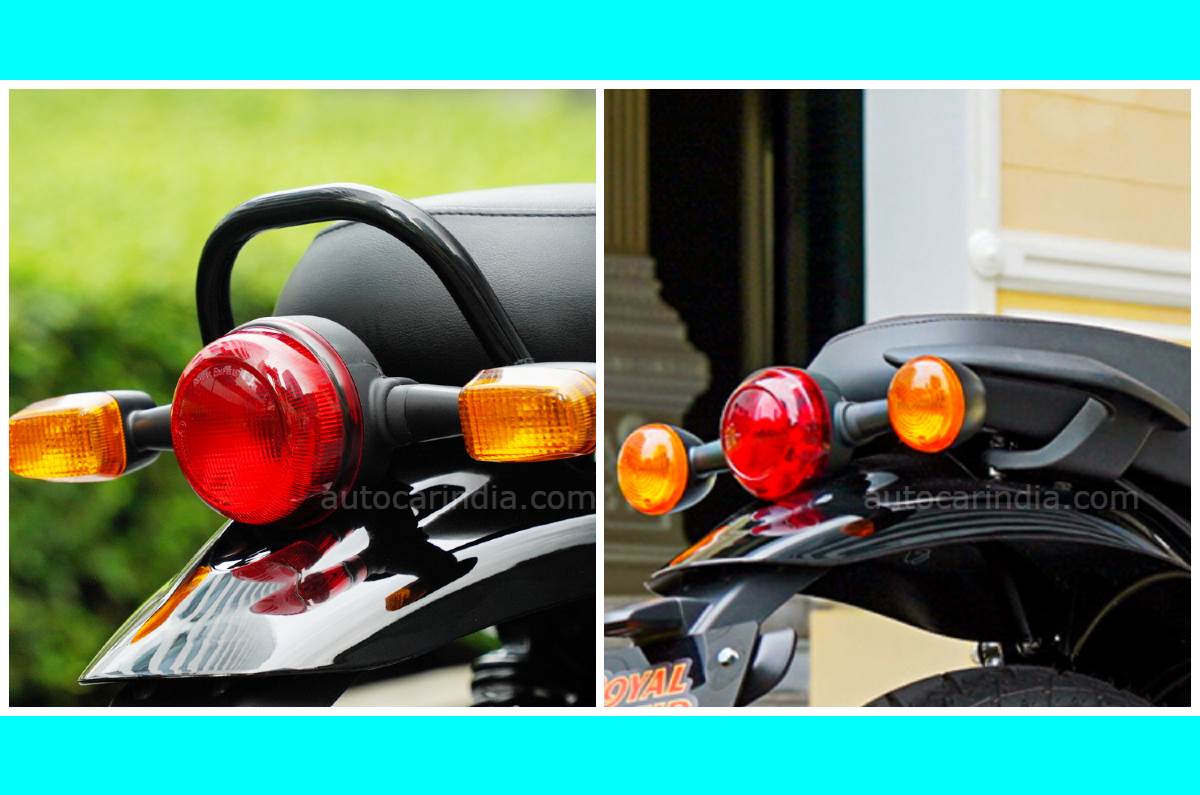The Retro is the entry-level variant with wire-spoke wheels, while the Metro is the alloy wheel-equipped range-topper.
Royal Enfield has finally launched its long awaited Hunter 350, and the new bike is being offered in two variants: Metro and Retro. Here’s what’s common across the board, and how the pair differ from each other.
Hunter 350 Retro vs Metro: differences
Let’s begin with the most visually obvious difference, and that is the wheels. Both bikes get the same wheel size, 17-inches, but the more affordable Retro version gets wire-spoke wheels, while the higher Metro variant rolls on alloy units. The tyres that these wheels are wrapped in also differ, in size, model and the presence of a tube. The Retro gets 110/80-17 and 120/80-17 tubed tyres, while the Metro gets chunkier rubber, with a 110/70-17 front and 140/70-17 rear. These are of the tubeless type, and they are Ceat Zoom XL tyres.\
The Retro variant (left) gets a rear drum brake and wire-spoke wheels, while the Metro version gets a rear disc brake and alloy wheels.
Another big difference between the two variants is in the braking department, where the Metro gets a 270mm rear disc brake and dual-channel ABS, while the Retro gets a lower spec, with a rear drum brake and single-channel ABS. Instrumentation is also an area of separation, with the Metro getting a fancier instrument cluster with a larger digital inset, borrowed from the Meteor and Scram, while the Retro uses a more basic speedometer pod with a smaller digital readout.

The Metro (left) gets a fancier instrument cluster with a larger digital readout, borrowed from the Scram and Meteor. The Retro sports a more basic meter console, with a smaller digital inset.
The final few differences are an LED tail-lamp and round indicators on the Metro vs a conventional halogen tail-lamp and rectangular indicators on the Retro, and more sleek, stylised rear grab rails on the Metro vs more rudimentary tubular grab rails on the Retro.

A halogen tail-lamp and rectangular indicators on the Retro (left), as opposed to an LED tail-lamp and round indicators on the Metro. Also note the different grab rails.
As a result of all the differences, there is of course a difference in price between the two variants. The Retro is available in a single colour series called the ‘Factory series’, priced at Rs 1,49,900 lakh. The Metro, on the other hand, comes in two colour series – the ‘Dapper series’ retails for Rs 1,63,900, while the ‘Rebel series’ is priced at Rs 1,68,900 (all prices ex-showroom, Delhi).
Hunter 350 Retro vs Metro: similarities
There’s a lot that’s common between the two variants of the Hunter, including the basic engine and chassis. Both versions get the 349cc single-cylinder, 2-valve engine, which produces the same 20.2hp at 6,100rpm and 27Nm at 4,000rpm as it does on the Meteor and Classic 350. But RE says that fuel and ignition maps have been tweaked on the Hunter, to better match the more youthful character of the motorcycle.

Frame and suspension components are also shared between both variants, and they comprise a double downtube frame suspended on a telescopic fork and twin shock absorbers. The 300mm front disc brake is also common across both versions.
To check out how the more highly-specced Metro variant weighs up against its competition, check out our spec comparo here.

